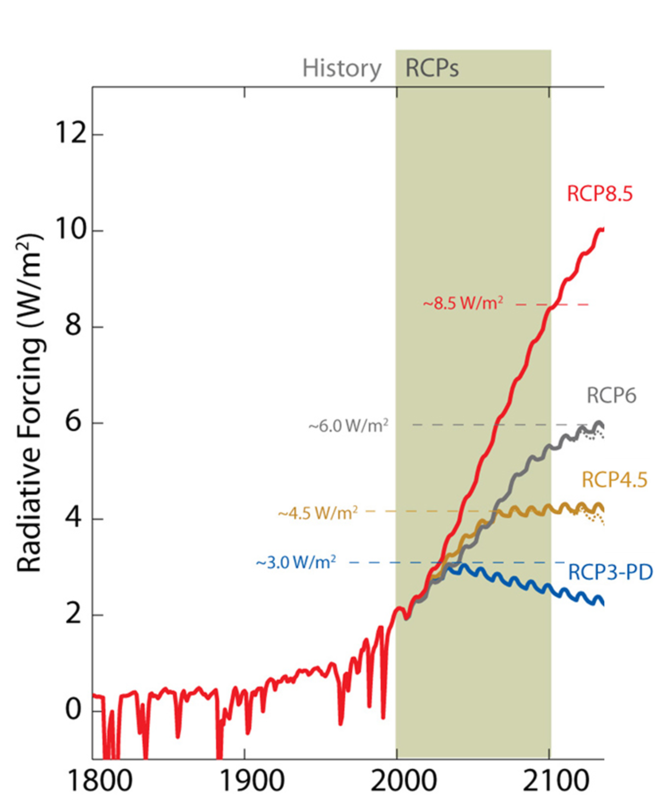In 2007, the IPCCIPCC
Intergovernmental Panel on Climate Change requested the scientific community to develop a new set of scenarios, as the existing scenarios (published in the Special Report on Emissions Scenarios, (Nakicenovic and Swart 2000), and called the “SRES scenarios”) needed to be updated and expanded in scope (see Moss et al. (2010) for a detailed discussion).
Scenarios
ScenariosScenarios
Scenarios can be thought of as stories of possible futures. They allow the description of factors that are difficult to quantify. In the context of climate change scenarios are used for the future development of factors such as governance, social structures, future population growth, technical development and agriculture. These descriptions are essential to model the future climate. form a crucial element in climate changeclimate change
Climate change refers to a change in the state of the climate that can be identified (e.g., by using statistical tests) by changes in the mean and/or the variability of its properties, and that persists for an extended period, typically decades or longer. Climate change may be due to natural internal processes or external forcings such as modulations of the solar cycles, volcanic eruptions and persistent anthropogenic changes in the composition of the atmosphere or in land use. Note that the United Nations Framework Convention on Climate Change (UNFCCC), in its Article 1, defines climate change as: 'a change of climate which is attributed directly or indirectly to human activity that alters the composition of the global atmosphere and which is in addition to natural climate variability observed over comparable time periods'. The UNFCCC thus makes a distinction between climate change attributable to human activities altering the atmospheric composition, and climate variability attributa research. They allow researchers to explore the long-term consequences of decisions today, while taking account of the inertia in both the socio-economic and physical system. Scenarios also form an integrating element among the different research disciplines of those studying climate change, such as economists, technology experts, climate researchers, atmospheric chemists and geologists.
Researchers from different disciplines worked together to develop a process to craft these new scenarios, as summarized by Moss, et al. (2010). The scenario development process aimed to develop a set of new scenarios that facilitate integrated analysis of climate change across the main scientific communities.
The pathways developed in the first phase were called “Representative Concentration Pathways (RCPs)”. They play an important role in providing input for prospective climate model experiments, including both the decadal and long-term projections of climate change. The RCPs also provide an important reference point for new research within the integrated assessment modeling (IAM) community by standardizing on a common set of year-2100 conditions, and exploring alternative pathways and policies that could produce these outcomes. By design, the RCPs, as a set, cover the range of radiative forcingradiative forcing
Radiative forcing is the change in the net, downward minus upward, radiative flux (expressed in Watts per square metre; W m-2) at the tropopause or top of atmosphere due to a change in an external driver of climate change, such as, for example, a change in the concentration of carbon dioxide (CO2) or the output of the Sun.
levels examined in the open literature and contain relevant information for climate model runs.
The four RCPs together reflect the range of year-2100 radiative forcing values found in the literature, i.e. from 2.6 to 8.5 W/m2, RCP2.6, RCP4.5, RCP6 and RCP8.5.
Source: van Vuuren et al.(2011)

Total radiative forcing (anthropogenic plus natural) for RCPs,—supporting the original names of the four pathways as there is a close match between peaking, stabilization and 2100 levels for RCP2.6 (called as well RCP3-PD), RCP4.5 & RCP6, as well as RCP8.5, respectively Source: Meinshausen et al. (2011)